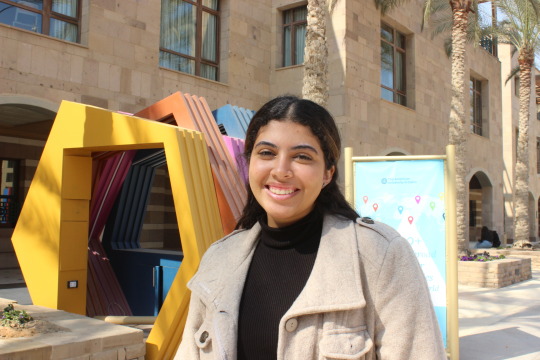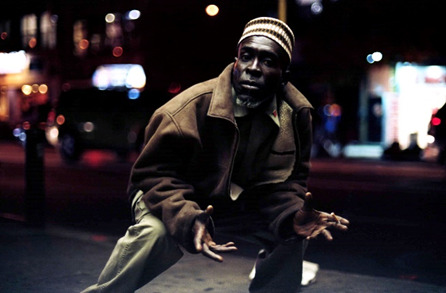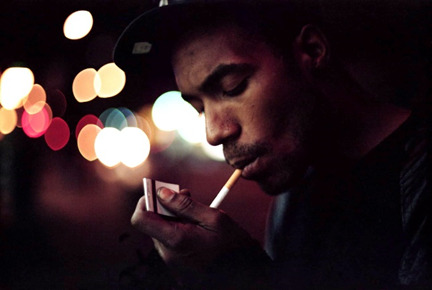Don't wanna be here? Send us removal request.
Text








The Cairo Egyptian Metro, often overlooked by many individuals, particularly those residing in Uptown Cairo, holds immense potential as an influential transportation system and a significant cultural symbol. As a passionate advocate for urban exploration and the promotion of local heritage, I have chosen to embark on a project that sheds light on the Egyptian Metro. This project aims to bring awareness to its existence and celebrate its unique features, historical significance, and impact on Egyptian society. By showcasing the metro's hidden charm, my objective is to foster appreciation among residents, tourists, and stakeholders, ultimately enhancing the overall perception and utilization of this remarkable asset in the beautiful city of Cairo.
1 note
·
View note
Text


Diane Arbus' "Young Man in Curlers" is a photograph that has been widely regarded as one of the most influential images in photographic history. Taken in 1966, the photograph depicts a young man wearing a dress and curlers, sitting on a couch in a New York apartment. The photograph has been praised for its ability to challenge gender and beauty norms, and for its exploration of identity and representation in photography.
At the time of the photograph's creation, gender and sexuality were highly policed and rigidly defined. Arbus' photograph challenged these norms by presenting a young man who was not conforming to traditional gender roles or expectations. The young man's dress, makeup, and curlers challenge the viewer's expectations of gender and beauty norms and force them to confront their own biases and assumptions.
Arbus' photograph also challenges the conventions of portraiture by presenting a subject who is not traditionally considered beautiful or desirable. The young man's appearance is unconventional, and his expression is ambiguous, creating a sense of unease and discomfort in the viewer. This sense of unease has been seen as a deliberate strategy by Arbus, who sought to challenge the viewer's assumptions and force them to engage with the subject on a deeper level.
Moreover, the photograph has been influential in shaping the discourse around representation and identity in photography. Arbus' photograph was created during a time when marginalized communities, including the LGBTQ+ community, were fighting for visibility and recognition. The photograph has been seen as a powerful representation of these struggles and has inspired other artists to explore similar themes in their work.
Overall, Diane Arbus' "Young Man in Curlers" is a photograph that has had a profound impact on the history of photography. Through its exploration of gender and beauty norms, the photograph challenged traditional conventions and paved the way for a more inclusive and diverse understanding of representation and identity in photography. The photograph continues to inspire and provoke critical dialogue around the power of images to shape our perceptions of the world around us.
0 notes
Text













In photography, composition is an essential tool for transforming a subject into a work of art. By carefully arranging the elements within a photograph, a photographer can create a visual narrative that captures the essence of their subject, conveying emotions, telling stories, and transforming the ordinary into something extraordinary.One of the most fundamental ways that composition can transform a photograph is by altering the viewer's perception of space and depth. A skilled photographer can use techniques such as framing, leading lines, and the rule of thirds to create a sense of depth and perspective, making the subject appear more three-dimensional and engaging.Composition can also be used to create a mood or atmosphere within a photograph. By playing with lighting, color, and texture, a photographer can create a sense of drama, mystery, or tranquility, transforming a simple scene into a captivating work of art.Another way that composition can transform a photograph is by conveying a sense of movement or motion. By using techniques such as panning or blurring, a photographer can create a dynamic, kinetic image that captures the energy and motion of their subject, whether it be a person, animal, or object.In conclusion, composition is a powerful tool for transforming an object in photography, allowing a photographer to create an image that goes beyond mere documentation and instead captures the essence of their subject. By playing with space, depth, mood, and motion, a photographer can create a photograph that is both visually stunning and emotionally resonant, transforming the ordinary into something extraordinary.
1 note
·
View note
Text
















Photo 1: ap: F11 shutter: 1/500
2a underexposed f8 shutter 1/500
2b Over exposed f16 1/500
2c Correctly exposed 11 1/500
3a 16 1/160
3b 4 1/2500
4a 1/250 f14
4v 1/30 f22
5 ap f20 1/200
6a shade 4.5 1/200
6b sun 20 1/200
7a 11 1/250 (all) FL (18)
7b FL (24)
7c FL (35)
2 notes
·
View notes
Text


Assignment 1: Khalik Allah’s beauty in photography is his ability to capture everyday life's raw and most vulnerable essence. He is most known and famous for his street photography, and most capture the streets of Harlem, New York. You can see the sociological pain, grief, and agony some people portray when their photos are being taken, and I believe it goes down to more than one element in his style. Khalik enjoys shedding light on the unseen of our society and what seems to be hidden from the media. This might be why he hints at “knowledge being born”, he spoon-feeds the unknown into society and shows what it is like to be African-American or of a minority on the streets of New York. When Khalik mentions that his photography can bring out understanding, I highly believe it can. When society and multiple individuals are able to see the perspectives of others, even through a camera lens, it widens yours to a whole different level.
It allows you to analyze life on a deeper scale. When he said, "the goal of life is to extend the light into people's lives," I believe he meant that in order to understand people, we must shine a light on them in their darkest moments and picture them. I think he utilized photography and movies to delve deeper into people's lives and sentiments, and I believe he is correct.
3 notes
·
View notes
















